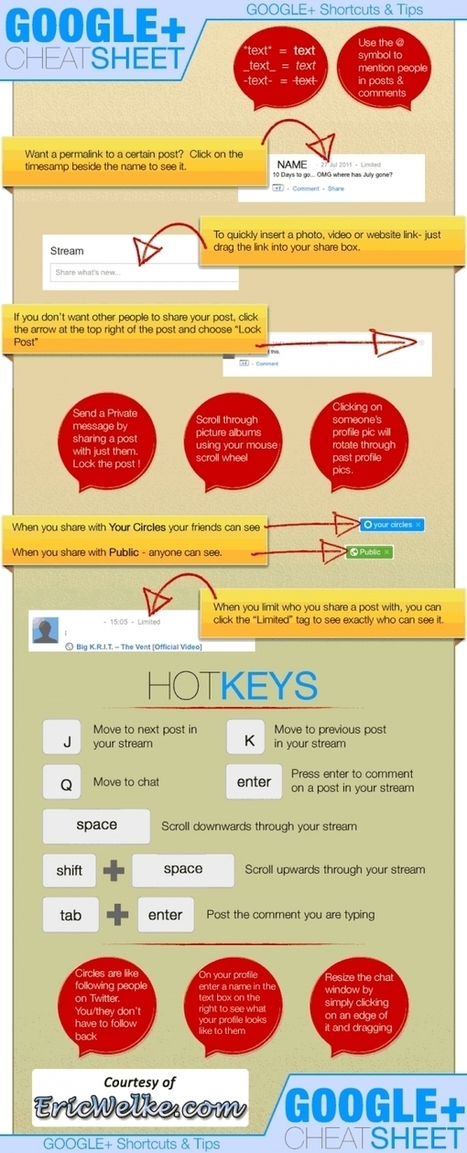Computational thinking is defined by Cummins as a process that "encourages students to explore solutions to problems that remain unsolved. (It) inspires innovation and supports problem-solving skills".
Design thinking, as stated by Scholastic, "is a creative problem-solving process that calls for thoughtful solutions to real-world situations.".
Get Started for FREE
Sign up with Facebook Sign up with X
I don't have a Facebook or a X account
 Your new post is loading... Your new post is loading...
 Your new post is loading... Your new post is loading...

Gust MEES's curator insight,
February 18, 2017 4:00 PM
Empowerment of people through Media and Information Literacy (MIL) is an important prerequisite for fostering equitable access to information and knowledge and promoting free, independent and pluralistic media and information systems.
Media and Information Literacy recognizes the primary role of information and media in our everyday lives. It lies at the core of freedom of expression and information - since it empowers citizens to understand the functions of media and other information providers, to critically evaluate their content, and to make informed decisions as users and producer of information and media content.
Learn more / En savoir plus / Mehr erfahren:
Sharaya Baltimore's curator insight,
September 20, 2016 12:29 PM
I like that it gives a comparison of behaviorism, cognitism and constructivism (even though we aren't looking at that school) and it also gives information about the teachers, learner and techniques, etc.
Susmita Dhungel's curator insight,
September 14, 2017 12:03 PM
This article explains the differences between behaviorism, cognitivism, and constructivism. It shows differences in each school's teachers, learners, types of materials, techniques, and factors. 
Krystal Robles's curator insight,
September 21, 2017 11:54 AM
I don't get as to why they all can share these things. The arrows indicate that the things relate to each other.
Jean-Louis LEFEBVRE's curator insight,
February 5, 2015 4:19 AM
Leçon d'infographie dans une présentation visuelle du connectivisme. 
Richard Samson's curator insight,
February 9, 2015 2:35 AM
Is Moodle connectivist (Piaget)? Or socioconstructivist (Vygotsky)? (Have I got those associations right?) Or is it both? Hey-ho! More work to do! 
Jason Leong's curator insight,
February 11, 2015 4:35 AM
"#4 Capacity to know is more critical than what is currently known, i.e. "Know-where is more important than know-how and know-what""

Dillon Thomas's curator insight,
February 1, 2014 5:55 PM
SCOOPS -- I began using Scoop when I was defining myself a LITE FEET DANCER. There was no single source of info about Lite Feet dance, a NYC Born Battle dance phenom and YouTube Sensation. I created LITE FEET SCOOP TO reference for my own resume but also to provide anyone interested a link to the multitude of YOUTUBE Channels, Sound Cloud and personal sites dedicated to this unique art form and the talented dancers who participate.

Annie 's curator insight,
December 5, 2014 8:18 PM
Scoop.it helps with the process of curating content. This is a must for your social media.
Beth Dichter's curator insight,
September 24, 2013 6:11 AM
What are the good habits of the world's smartest people and what are their bad habits? This infographic explores these areas. It is divided into a two major sections - the good and the bad, and each is then divided into additional sections. The good includes areas that discuss: * Persistency * Goal Setting * Benefits of being an avid read * Self-disciplined * Thinking about thinking The negative inclues areas that discuss: * Potential addictions (specifically drinking and drugs) * Sleep deprivation * Anxiety The infographic does provide a list of resources. Scroll down to see a clickable list of the links (beneath the infographic). 
Carolyn Williams's curator insight,
September 24, 2013 11:28 AM
As part of my service I tackle these habits every day!.
Beth Dichter's curator insight,
July 25, 2013 10:14 PM
You might also want to check out the pdf "Recombinant Education: Regenerating the Future of Learning." The 14 page document states "This forecast previews five disruptions that will reshape learning over the next decade. Responding to them with creativity rather than fear will be critical to preparing all learners for an uncertain future." This publication with the infographic provides much food for thought as we education continues to shift into new areas. Use this link to download: http://knowledgeworks.org/sites/default/files/Forecast3_0_0.pdf 
Christina Chavez-Reyes's curator insight,
September 18, 2014 2:02 AM
Here's one way in which learning in a knowledge society may happen. Do you see glimmers of this reality emerging? How might it effect what college should be doing for you? Something to think about.

Steve Whitmore's curator insight,
August 14, 2015 8:05 AM
This is a great infographic for showing the thought process of finding information. 
Terry Yelmene's curator insight,
August 16, 2015 11:50 AM
A pretty well-reasoned, fundamental thought process for most knowledge work research. This serves as an even better backward (there-to-here) model to guide the core research workflow process automation a knowledge worker may want to devise, install. Think work product-informed -> DevonThink structures -> DevonAgent w/'Active Filtered' automated searches. The most important drivers here are - 'ethical' - (more than just multiple sources, a stage needs to be added at the work product stage to provide authenticity) and - 'bias' - (a post automated search, subsequent manual search for corroborating items selection to provide authority). corroborating

Paco Arcoleo's curator insight,
July 26, 2013 3:12 AM
Una semplice e chiara infografica sullo stato dei fatti degli utilizzatori di internet al giorno d'oggi, meno del 10% degli account umani/reali utilizza facebook, beh allora ci stiamo evolvendo sul serio ;)

Maria Lopez Alvarado, MBA's comment,
September 26, 2013 9:05 PM
Mathy: Definitely the time to make some changes...

Maria Lopez Alvarado, MBA's comment,
September 26, 2013 9:08 PM
Diane: I agree, the Flipped Classroom is a great strategy to engage the students!

Maria Lopez Alvarado, MBA's comment,
September 26, 2013 9:08 PM
Diane: I agree, the Flipped Classroom is a great strategy to engage the students!

Deb Nystrom, REVELN's comment,
June 28, 2013 12:54 PM
Robin and Ann, in SOME areas, yes, I can see it. To Ann's point, particularly in ranking - rating - analysis paralysis older industries, I think the USA lags behind.

Deb Nystrom, REVELN's comment,
June 28, 2013 12:56 PM
AnnC - Found this older HuffPo post. STEM to STEAM, intriguing! http://www.huffingtonpost.com/john-tarnoff/stem-to-steam-recognizing_b_756519.html

Ken Morrison's comment,
July 12, 2013 1:29 PM
HI Jim, Thanks for following my topic. I hope that it is helpful for you . You have a great site started here.

ghbrett's curator insight,
July 23, 2013 8:49 AM
As the old saying goes: "A picture is worth a thousand words." This also reminds me of Malcomb Gladwell's book, "Blink." Amazon: http://amzn.to/13AalVQ 
Bruce McDuffee's curator insight,
August 20, 2013 2:53 PM
It's important to keep in mind your audience and how the ideal prospect likes to consume content. Scientists or engineers for example my consume or respect different media than consumers of clothing or electronics. |

Gust MEES's curator insight,
November 19, 2017 2:19 PM
Last week, Chip R. Bell and Marshall Goldsmith released the revised edition of their classic book “Managers as Mentors: Building Partnerships for Learning”.
This week, they open up in a free-flow conversation with QAspire on the art of effective mentoring. In my view, this interview is almost a definitive guide to become a great mentor!
Learn more / En savoir plus / Mehr erfahren:
https://www.scoop.it/t/21st-century-learning-and-teaching/?&tag=Mentoring+Instead+of+Teaching
https://www.scoop.it/t/21st-century-learning-and-teaching/?&tag=Mentorship
https://gustmees.wordpress.com/2016/07/13/coaching-instead-of-teaching-in-modern-education/
https://gustmees.wordpress.com/2014/07/10/education-collaboration-and-coaching-the-future/
Sarah's curator insight,
June 4, 2017 8:25 PM
This is a short article on the ways that teachers' roles are changing. It is important to note that teachers are not becoming obsolete, but are just as important as ever. Teachers are here to facilitate learning and assisting the students in becoming resilient, self directed and capable learners.

Mariann Gissella Castillo Herrera's curator insight,
December 3, 2020 12:07 PM
These are the types of changes in the teacher's role that are fundamental to developing students who are capable of independent learning and reinvention in a rapidly changing world.
Luisa Fernanda Giraldo 's curator insight,
December 4, 2020 11:58 PM
We can observe a significant change in the teacher's role. Nowadays, students are more independent in the learning process, and due to the pandemic situation, students are forced to create new study habits to learn by themselves. However, the teacher still plays a fundamental role in classes and provides different tools to help students improve while learning.

Craig Broadbent's curator insight,
May 3, 2016 8:12 PM
If you are looking to use twitter to drive business then this info is important!

La pluma digital's curator insight,
October 28, 2016 3:01 AM
¿Sabes cómo se utiliza Twitter alredor del mundo?
BrianCaldwell7's curator insight,
April 5, 2016 8:13 AM
Cities in this region have experienced spectacular growth; they are at the heart of China's manufacturing and exporting boom. For example, Shenzen was a small city with about 10,000 residents in 1980 but is now a megacity with over 10 million people. China's SEZs (Special Economic Zones). Cities that were once separate entities have coalesced into a large conurbation and if they are counted as one, it's now the largest metropolitan area. Cities like London and New York become global cities over hundreds of years--this happened in one generation. Click here for 5 infographics showing East Asia's massive urban growth. Tags: APHG, urban, industry, manufacturing, economic, unit 7 cities, megacities, China, East Asia.

Kathleen McClaskey's curator insight,
April 4, 2014 11:51 AM
An infographic can hardly contain enough space to tackle the big, hairy challenges of American education. But the non-profit, Digital Promise, has tried to identify some of the biggest challenges — and ideas for solutions — identified by the 46 schools in their League of Innovative Schools that are trying new techniques. They address issues like competency-based learning and personalized professional development, as well as students’ ownership of their learning. 
Silverback Learning's curator insight,
April 5, 2014 9:15 AM
There are more than 7 hurdles but this Infographic underscores the need for the education community to embrace change. 
María Dolores Díaz Noguera's curator insight,
April 5, 2014 2:06 PM
7 Big Hurdles In Education and Ideas For Solving Them

Cllr Jane MA Martin's curator insight,
October 31, 2013 4:49 AM
We all need to embrace this if we don't want to be left behind 
ExploreCurate's curator insight,
November 2, 2013 5:34 AM
I love these pompous graphics images. When you have to scroll, you know their are important. Consumer behavior has always been key. At least for the marketers.
Newspapers saw early social media as a threat. Now they need to be friends with monsters like Facebook. Content is king. Distribution is everything. If you are a newspaper. Probably consumer behavior (and consumtion particulary) should be on top of every newspaper agenda.
Sign up and receive monthly digital business insights. Curated for you and free to share http://bit.ly/1f9UXDG . 
MJUNCKE's curator insight,
November 3, 2013 8:47 AM
Facebook doesn't replace our known News-Resources, but it's more and more becoming an additonal News-Ressource for us.
Beth Dichter's curator insight,
August 22, 2013 7:34 PM
Check out this infographic to learn how the Kids of the Past compare with the Internet Generation in the following areas: * Cultural and Social Characteristics 
Yasemin Allsop's curator insight,
August 23, 2013 11:28 AM
Kids of poverty? That would be interesting comparison too.. 
Viljenka Savli (http://www2.arnes.si/~sopvsavl/)'s curator insight,
September 9, 2013 3:47 AM
Can we compare them?...

Betty Carlin's curator insight,
August 16, 2013 5:38 PM
10 tips to get the most our out your social media investment. [INFOGRAPHIC] 
Bart van Maanen's curator insight,
August 20, 2013 5:44 AM
Wat kun je waar het beste delen? Deze infographic helpt je dat te bepalen. Best opmerkelijk is dat Pinterest hier slecht scoort voor het delen van video's.

CECI Jean-François's curator insight,
August 8, 2013 4:13 AM
Édifiant...surtout quand on vit au quotidien avec les énormes réticences des universités Françaises :-)

Jesse Garboden's curator insight,
July 17, 2013 9:19 PM
Google+ has Communites, they are better organized than Facebook groups.

luiy's curator insight,
July 8, 2013 7:42 AM
For over a century, writers and architects have imagined the cities of the future as giant structures that contain entire metropolises. To some, these buildings present the best means for cities to exist in harmony with nature, while others forsee grotesque monstrosities destructive to the human spirit. In the mid-20th century, engineer and futurist R. Buckminster Fuller imagined city-enclosing plastic domes and enormous housing projects resembling nuclear cooling towers. These ideas are impractical but they explore the limits of conventional architectural thinking. Science fiction writers and artists often imagine future architecture that oppresses the human spirit. Megastructures such as the pyramid-like Tyrell Buildings of “Blade Runner” dominate a decrepit skyline. The decaying old city is simply covered with layers of newer, larger buildings in a process of “retrofitting.” Beginning in the late 1960s, architect Paolo Soleri envisioned a more humane approach. The word “arcology” is a combination of “architecture” and “ecology.” The goal is to build megastructures that would house a population of a million or more people, but in a self-contained environment with its own economy and agriculture. “In the three-dimensional city, man defines a human ecology. In it he is a country dweller and metropolitan man in one. By it the inner and the outer are at ‘skin’ distance. He has made the city in his own image. Arcology: the city in the image of man.” (Paolo Soleri) In 1996, a group of 75 Japanese corporations commissioned Soleri to design the one-kilometer-tall Hyper Bulding, a vertical city for 100,000 people. Existing in harmony with nature, the Hyper Building was designed to recycle waste, produce food in greenhouses, and use the sun’s light and heat for power and climate control. The structure was designed for passive heating and cooling without the need for machinery. An economic recession put the brakes on the project and it was never built. Soleri’s arcology concept is being put to the test in the Arcosanti experimental community being built in Arizona. Construction began in 1970. When complete the town will house 5,000 people. Buildings are composed of locally produced concrete and are designed to capture sunlight and heat. To be built in the desert near Abu Dhabi, Masdar is a 2.3-square-mile (6 sq km) planned city of 40,000 residents. Buildings are designed to reduce reliance on artificial lighting and air conditioning, and the city will run entirely on solar power and renewable energy. Begun in 2006, the project is planned for completion around 2020-2025.

Fàtima Galan's curator insight,
July 9, 2013 5:44 AM
Amazing and beautiful analysis!! Believe it or not, the science fiction also has something to teach us about the city of tomorrow.

Louise Robinson-Lay's curator insight,
June 22, 2013 6:29 PM
great for preparing data and analyzing it. |






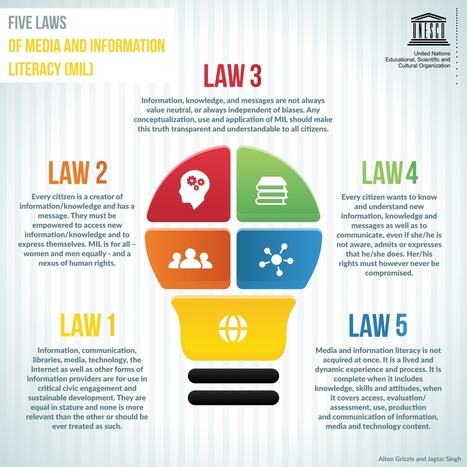
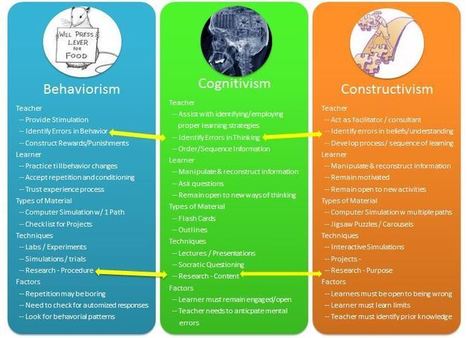
![Connectivism [Infographic] | :: The 4th Era :: | Scoop.it](https://img.scoop.it/g80D1nB72U-guyGWfI-QRTl72eJkfbmt4t8yenImKBVvK0kTmF0xjctABnaLJIm9)


![Scoop.It for SEO – A New World of Curation [Infographic] | :: The 4th Era :: | Scoop.it](https://img.scoop.it/K1jyAzAS4jUQBxVtjMlfFTl72eJkfbmt4t8yenImKBVvK0kTmF0xjctABnaLJIm9)


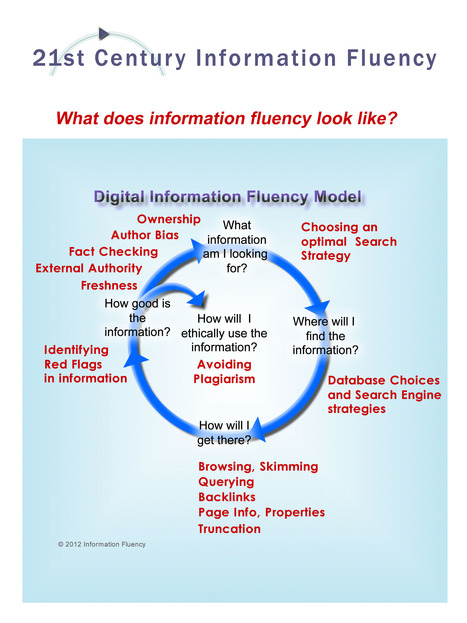

![How People Use the Internet [INFOGRAPHIC] | :: The 4th Era :: | Scoop.it](https://img.scoop.it/HxayS8uDxOfZb1g4NfEF4jl72eJkfbmt4t8yenImKBVvK0kTmF0xjctABnaLJIm9)


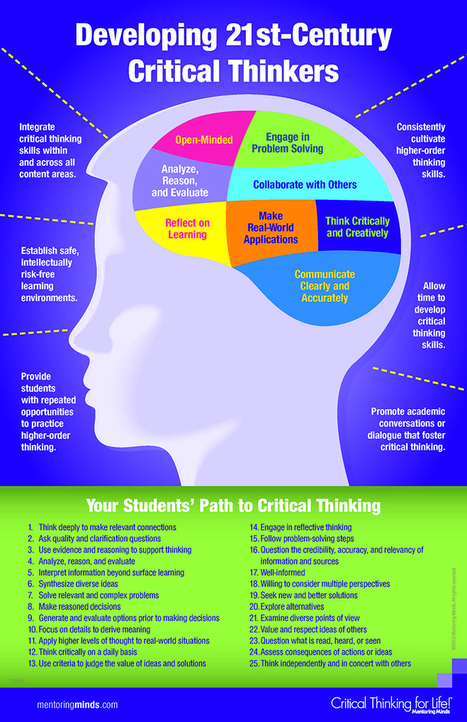
![Sparking Creativity [Infographic] | :: The 4th Era :: | Scoop.it](https://img.scoop.it/utakWHeE3dyKNmjP0pUzjTl72eJkfbmt4t8yenImKBVvK0kTmF0xjctABnaLJIm9)
![13 Reasons Your Brain Craves Infographics [Infographic] | :: The 4th Era :: | Scoop.it](https://img.scoop.it/drRLnCgu2GGUjqDC_MCtSzl72eJkfbmt4t8yenImKBVvK0kTmF0xjctABnaLJIm9)

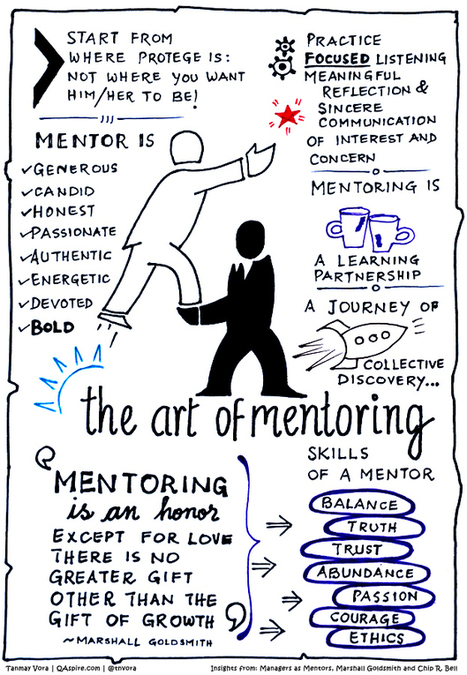

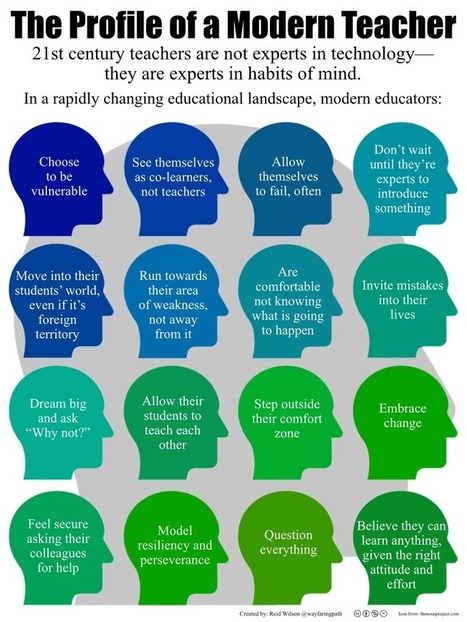
![How the World Uses Twitter [Infographic] | :: The 4th Era :: | Scoop.it](https://img.scoop.it/6Dg6itUz7Vpr79vsiEFCUTl72eJkfbmt4t8yenImKBVvK0kTmF0xjctABnaLJIm9)




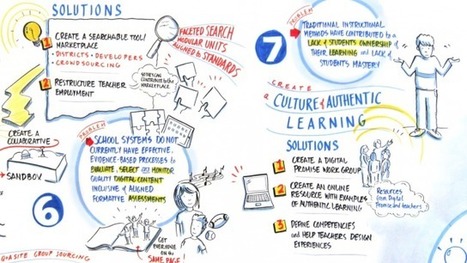

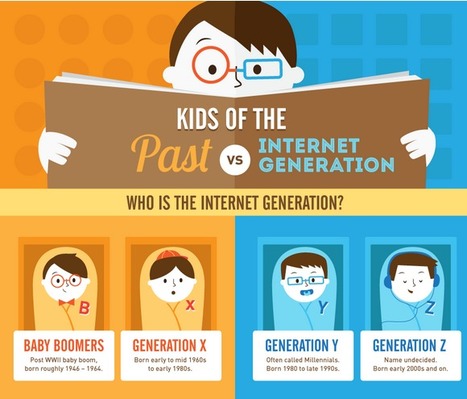


![Schooled by Google: How Google Apps is penetrating education [infographic] | :: The 4th Era :: | Scoop.it](https://img.scoop.it/CxjbWNLAB_lSO-GqLacbijl72eJkfbmt4t8yenImKBVvK0kTmF0xjctABnaLJIm9)
